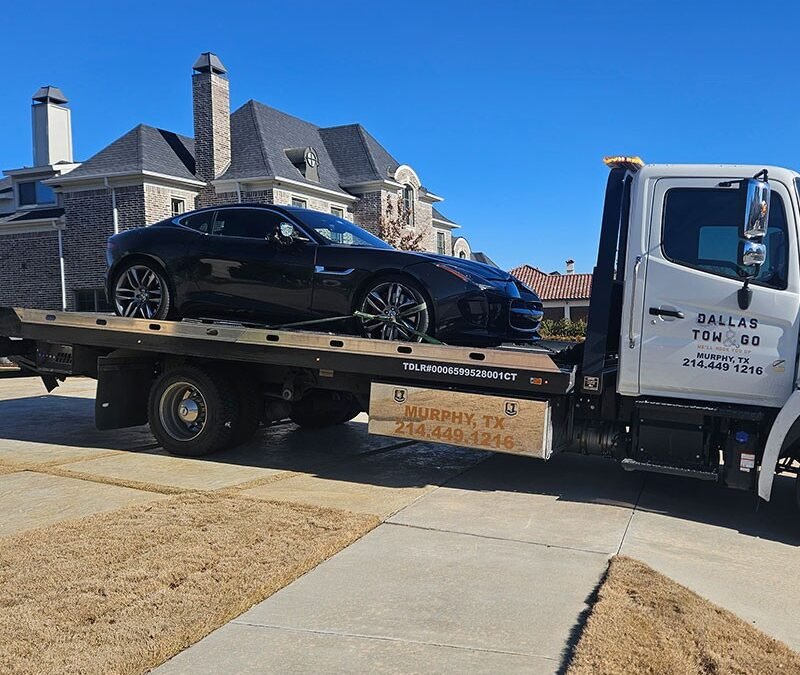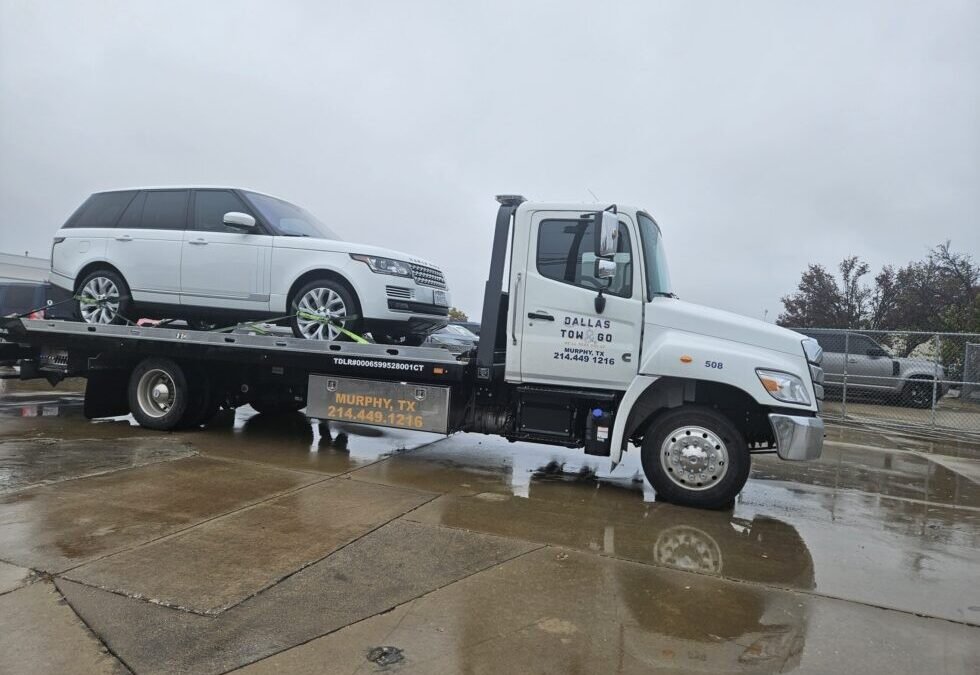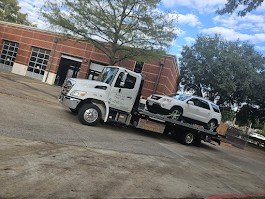There’s a growing need to understand proper methods for electric vehicles towing as these vehicles require special care compared to traditional cars. When you handle an electric vehicle tow, you must follow specific guidelines to avoid damage to the battery and electrical systems. For professional and reliable assistance, you can trust a company like Dallas Tow & Go to handle your vehicle with the expertise it needs. In this post, you’ll learn easy steps and tips to tow your electric vehicle safely, ensuring both your safety and the vehicle’s longevity. Whether you’re dealing with a flat battery or an emergency, knowing how to tow an EV correctly helps protect your investment and keeps you prepared on the road.
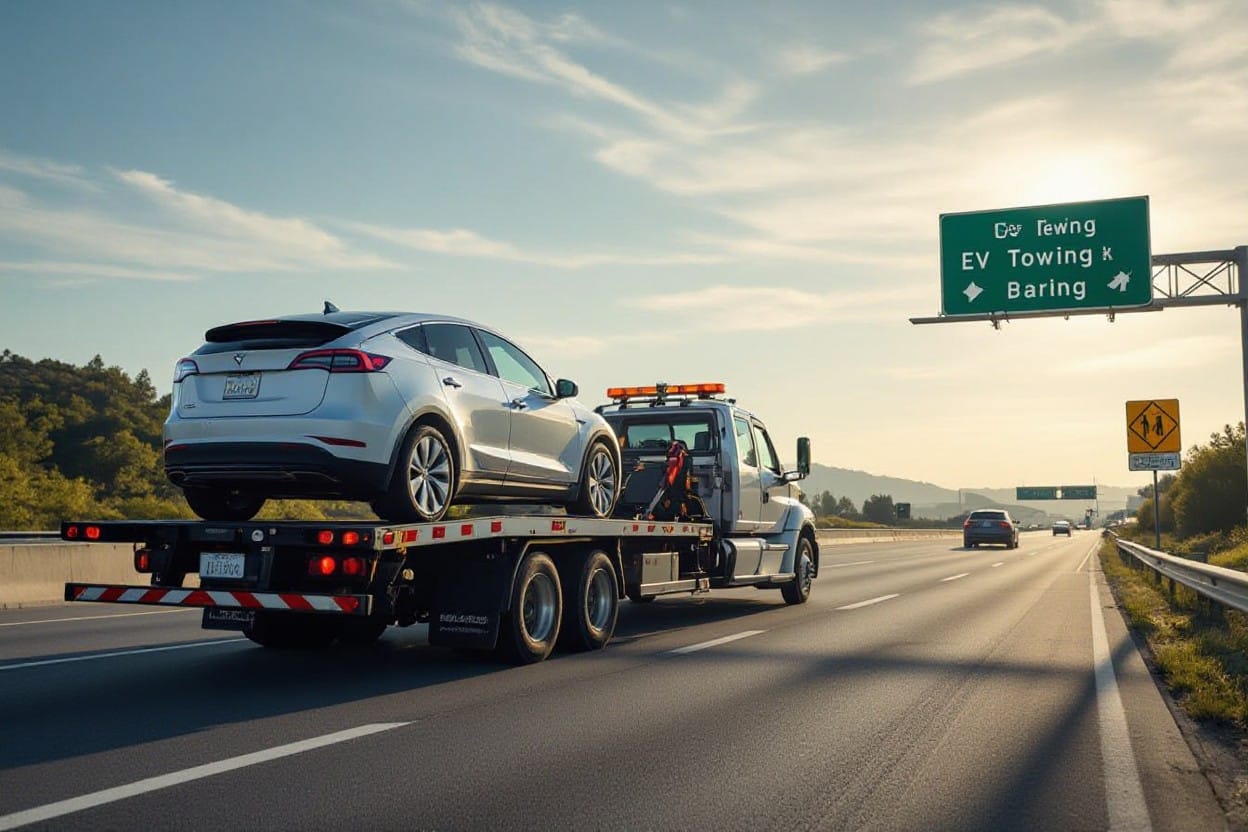
The Unique Challenges of Towing Electric Vehicles
Towing electric vehicles demands special attention due to their distinct engineering characteristics, making standard towing practices often unsuitable. Unlike traditional cars, electric vehicles towing involves assessing factors like weight distribution, drivetrain configurations, and advanced battery systems that impact how you secure and transport the EV effectively. Understanding these nuances will help you avoid damage to the vehicle and its components during the tow.
Weight and Design Differences
Electric vehicles tend to be heavier than their gasoline counterparts largely because of the large battery packs embedded in their chassis. This alters the center of gravity and overall weight distribution, affecting towing stability and braking performance. When you plan an electric vehicle tow, factor in these extra pounds and unique design layouts, especially because EVs often lack a traditional transmission that helps protect drivetrains during towing.
Battery Safety Considerations
The high-voltage battery packs in EVs require special handling during a tow to prevent damage or safety hazards. Mishandling can lead to battery overheating or electrical faults. Knowing the recommended towing methods for your specific model ensures the battery system remains secure and intact throughout the tow.
Beyond preventing physical damage, proper electric vehicle towing has a direct impact on battery longevity and safety. Some manufacturers advise flatbed towing exclusively because direct towing with wheels on the ground risks spinning the electric motor backward, potentially harming the battery management system. Additionally, exposure to extreme temperatures during the tow can destabilize the chemical cells in the battery, so using a temperature-controlled tow truck or covering the battery areas is often recommended. By adhering to these guidelines, you minimize the risk of costly repairs and ensure the EV’s battery remains reliable post-tow.
Preparing Your EV for Towing: Essential Steps
Before towing your electric vehicle, follow specific steps to protect both the car and the towing equipment. Disconnect the EV’s 12-volt battery to prevent electrical damage, put the transmission in neutral, and consult the owner’s manual for any model-specific guidelines. Doing so reduces the risk of costly repairs and ensures a smoother towing process. These preparations align with proper electric vehicle towing methods that maintain your EV’s integrity during transport.
Correctly Assessing Weight and Capacity
Check the towing capacity of your vehicle and the weight of your EV to avoid overloading. Electric cars typically weigh between 3,500 and 5,500 pounds, so verify that your tow rig can handle this load safely. Matching the trailer’s Gross Vehicle Weight Rating (GVWR) with the EV’s curb weight prevents strain on the towing setup and keeps you within legal limits on the road.
Securing Critical Components
Before towing, ensure all essential parts of your EV are adequately protected and fastened, particularly components such as wheels, suspension, and charging ports. Use specialized wheel straps or chocks designed for electric vehicle tow systems to keep the car stable and avoid damage during movement. Properly covering the charging port helps prevent moisture and debris from entering, which could cause electrical issues later.
Additional care when securing critical components includes inspecting tire pressure and brake condition, both of which influence towing stability. For example, keeping tires inflated to the recommended levels reduces the risk of blowouts while confirming that the parking brakes are disengaged prevents strain on the tow vehicle. Taking these steps limits wear and tear on your EV as you transport it to your destination.
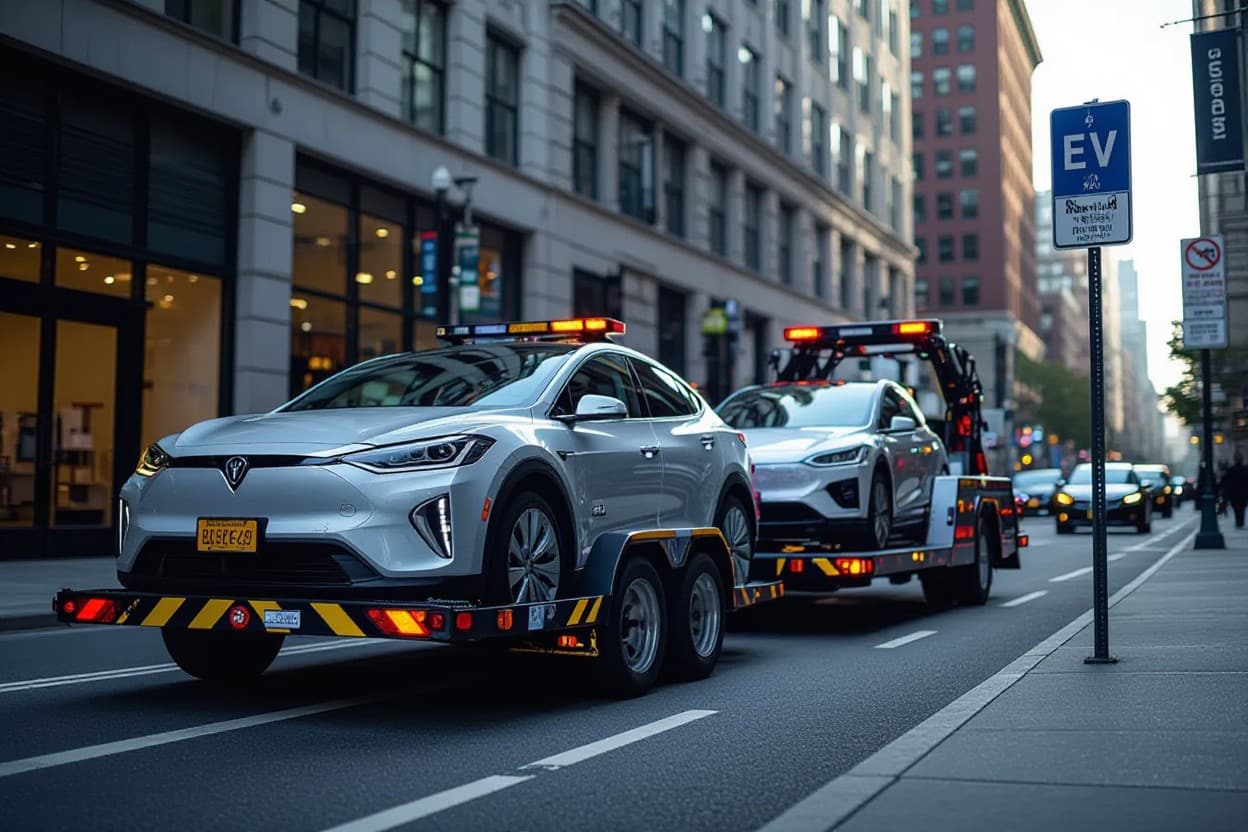
Choosing the Right Tow Equipment
Finding the proper tow gear for electric vehicles towing means matching the equipment to your EV’s design and weight specifications. Tow bars, dollies, or flatbeds each offer different benefits and challenges, so your choice impacts safety and vehicle preservation. Selecting parts specifically designed for EVs helps prevent damage to the battery and drive system while maintaining stable towing on roads. Assess the tow setup carefully to ensure a smooth electric vehicle tow experience without risking expensive repairs.
Selecting Appropriate Tow Hitches
You’ll want tow hitches designed to handle the specific weight and shape of your electric vehicle. Many EVs feature unibody construction, which requires a hitch with the correct mounting points to prevent chassis stress. For example, a Class III hitch often fits compact EVs, supporting up to 5,000 pounds, while larger EVs might require a stronger Class IV or V hitch. Matching hitch class with your EV’s gross vehicle weight rating (GVWR) ensures a secure and balanced tow.
Understanding Tow Ratings and Compatibility
Tow ratings detail the maximum safe towing weight and tongue load for your equipment and EV combined. Your electric vehicle tow setup must comply with these numbers to avoid mechanical failure or electrical system damage. Manufacturer specs usually list the maximum trailer weight an EV can handle. For instance, the Ford Mustang Mach-E allows a tow rating of up to 3,500 pounds when properly equipped, meaning your hitch and tow bar must meet or exceed this capability for safe operation.
Digging deeper into tow ratings reveals that many EVs have lower towing capacities compared to traditional combustion vehicles. This is due to the battery’s weight distribution and cooling requirements, which affect towing limits. Incompatibility can cause accelerated brake wear or overheating battery packs under load. Consider the combined weight of your trailer and cargo relative to the GVWR and tongue weight limits. Also, check that your tow equipment’s ratings align with the EV’s maximum gross combined weight rating (GCWR), typically found in the owner’s manual or manufacturer guidelines, to maintain control and protect drivetrain components.
Expert Tips for a Smooth Towing Experience
- Check your electric vehicle’s owner manual for specific towing instructions and maximum towing capacity limits.
- Ensure the electric vehicle tow setup includes the proper hitch compatible with your EV’s make and model.
- Use trailer brakes if your load exceeds 1,000 pounds to maintain stopping power and reduce strain on your EV.
- Regularly monitor tire pressures on both your EV and the trailer for optimal traction and control.
- Any adjustments to speed or driving style can enhance stability, making towing safer and extending your EV’s range.
Maintaining Control and Stability
Slowing down and maintaining steady speeds help you manage your electric vehicle’s stability while towing. Sudden maneuvers can disrupt traction, especially since electric cars have a low center of gravity due to battery placement. Counteracting sway with electronic stability control or tow/haul modes, if available, improves control. Maintaining a safe following distance and using gentle braking further reduces the risk of trailer fishtailing, allowing you to navigate curves and uneven terrain safely.
Managing Power Consumption and Range
Towing an extra load increases your EV’s energy demands significantly, often reducing driving range by 20% to 40%. You’ll see higher power draw when accelerating or climbing hills, so planning charging stops along your route becomes crucial. Using regenerative braking can recapture some energy, but aerodynamic drag and additional weight mean more frequent charge breaks than usual. Any anticipation of these factors can help you avoid unexpected range issues.
Extended towing requires adapting your energy management strategy. For example, reducing your speed to 50-60 mph, rather than highway speeds of 70-75 mph, improves efficiency by minimizing wind resistance. Monitoring your EV’s energy consumption display enables you to adjust your driving habits in real time. Moreover, preconditioning your battery before departure and choosing routes with accessible high-speed chargers can alleviate range anxiety. Combining these tactics ensures your electric vehicle tow journey remains smooth and energy-efficient.
Legal and Regulatory Considerations for Towing EVs
Understanding the legal and regulatory landscape is key when managing electric vehicles towing. Each state enforces different rules regarding how EVs can be towed, including equipment specifications and authorized tow methods. Following these laws helps you avoid penalties and ensures safe, compliant towing practices. Additionally, being aware of insurance and liability requirements protects both you and the vehicle owner during a tow, especially since electric vehicles often involve specialized technology and higher repair costs after improper towing.
State-Specific Towing Laws
Laws governing electric vehicle tow vary widely among states, with some mandating flatbed towing exclusively to prevent damage to battery and drivetrain components. For example, California requires flatbed use for all EVs unless the vehicle is declared immobile, while Florida allows dolly towing under certain conditions. By checking your local DMV or transportation authority’s guidelines before initiating a tow, you can ensure compliance and reduce the risk of causing costly damage or incurring fines.
Insurance and Liability Issues
Insurance coverage for electric vehicle towing may differ from conventional vehicles due to the unique nature and repair costs associated with EVs. Your towing or roadside assistance provider should verify that coverage extends to electric vehicles specifically, including battery and electronic system protection. Liability can become complex if improper towing methods result in damage; knowing your insurance policy’s limits and conditions helps clarify financial responsibility and protects your interests.
Liability exposure increases when unapproved towing methods are used on electric vehicles, as the battery pack and electronic controls are vulnerable to damage. Confirming that your insurance policy covers electric vehicle towing and associated risks prevents out-of-pocket expenses from repairs or claims disputes. Some policies now include specific clauses addressing electric vehicles, reflecting their growing presence on roads. Consulting with your insurer about coverage nuances before offering electric vehicle tow services ensures you can confidently handle potential incidents without unexpected financial burdens.
Final Thoughts
From above, you can see that electric vehicles towing requires special care to avoid damage to your EV’s battery and systems. When planning an electric vehicle tow, it’s essential to follow guidelines that ensure your vehicle is properly secured and to use the right equipment specifically designed for electric cars. By understanding the unique needs of EVs during towing, you can protect your investment and maintain your vehicle’s performance. For a service you can count on, Dallas Tow & Go has the right equipment and experience to handle your vehicle safely. Whether using flatbed towing or a specialized towing method, these safe practices will help you handle electric vehicle towing with confidence and effectiveness.
FAQ
Q: Can all electric vehicles towing be done using a traditional tow truck?
A: Not all electric vehicle towing is suitable for traditional tow trucks. Many EVs have specific requirements due to their electric motors and battery systems. It is often recommended to use flatbed tow trucks for towing electric vehicles to prevent damage to the undercarriage and drivetrain. Always check the vehicle’s owner’s manual or consult a professional tow operator familiar with electric vehicle towing procedures.
Q: What are the best practices for electric vehicle tow to avoid battery damage?
A: When towing an electric car, it is important to avoid methods that strain the battery or electric motor. For electric vehicles towing, using a flatbed truck that lifts the vehicle off the road is preferred. If flatbed towing isn’t available, ensure the drive wheels are off the ground to prevent the battery from discharging or damaging the electric powertrain. Disconnecting the battery or switching the vehicle to neutral, if allowed by the manufacturer, also helps protect the system.
Q: Is it safe to tow an electric car with its wheels on the road?
A: Towing an electric vehicle with its wheels on the ground is generally not recommended. Electric vehicles towing with wheels on the road can cause damage to the electric motor, power electronics, or battery if not done correctly. If wheel-lift towing is necessary, only tow the non-drive wheels or use proper equipment that prevents mechanical stress on the electric drivetrain. Consulting the vehicle’s manual for specific towing instructions will help ensure safety.
Q: How does electric vehicle towing differ from towing traditional gasoline cars?
A: Electric vehicles towing differs because EVs have electric motors and large battery packs that require special handling. Unlike traditional gasoline cars, you cannot simply tow an electric vehicle with two wheels on the ground without risking damage. EVs often need flatbed towing or unusual procedures to avoid draining the battery or harming electrical components. The difference also stems from the lack of a conventional transmission system in many electric vehicles.
Q: Are there any precautions to take before towing an electric vehicle?
A: Before performing an electric vehicle tow, several precautions should be taken. First, consult the owner’s manual for specific towing guidelines. Ensure the vehicle is in the proper gear or mode, such as ‘neutral’ or ‘tow mode,’ if available. Turn off the high-voltage system if recommended by the manufacturer. Always use the correct towing equipment designed for electric vehicles, and avoid sudden starts or stops during the towing process to protect the battery and electrical systems.
When your EV needs a tow, don’t risk damage with a standard service. Dallas Tow & Go specializes in towing electric vehicles, utilizing advanced equipment such as flatbed tow trucks and offering professional roadside assistance. Our team is trained to handle the unique challenges of EV transport, ensuring your vehicle is moved safely and without harm to its battery or drivetrain.
If you’re in the Dallas area and need a tow for your electric vehicle, don’t hesitate. Contact us now to receive the expert assistance you need.
Best Electric Towing Vehicles: How 5 Top EVs Handle Heavy Loads
Flat Tow Vehicles Tips to Boost Road Safety in 2025
9 Crucial Tow Truck Equipment Pieces for Tough Recovery Jobs


